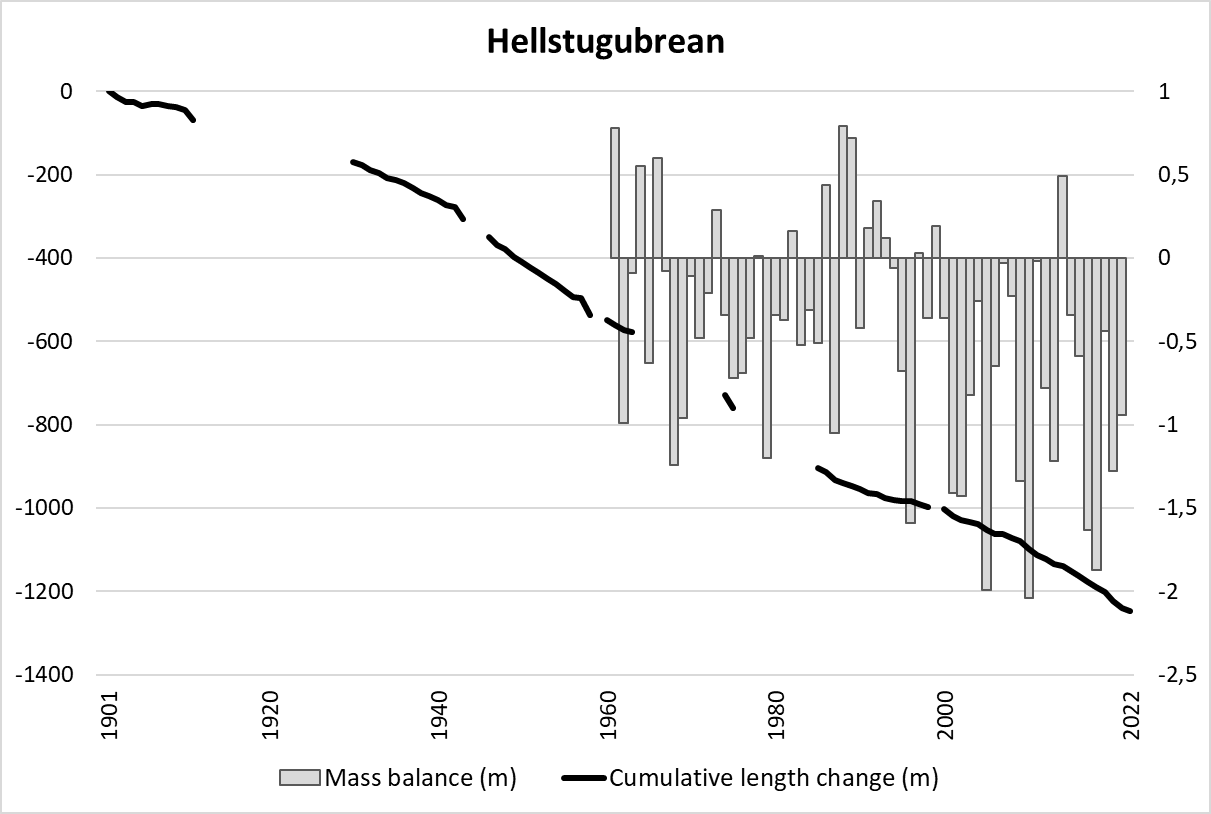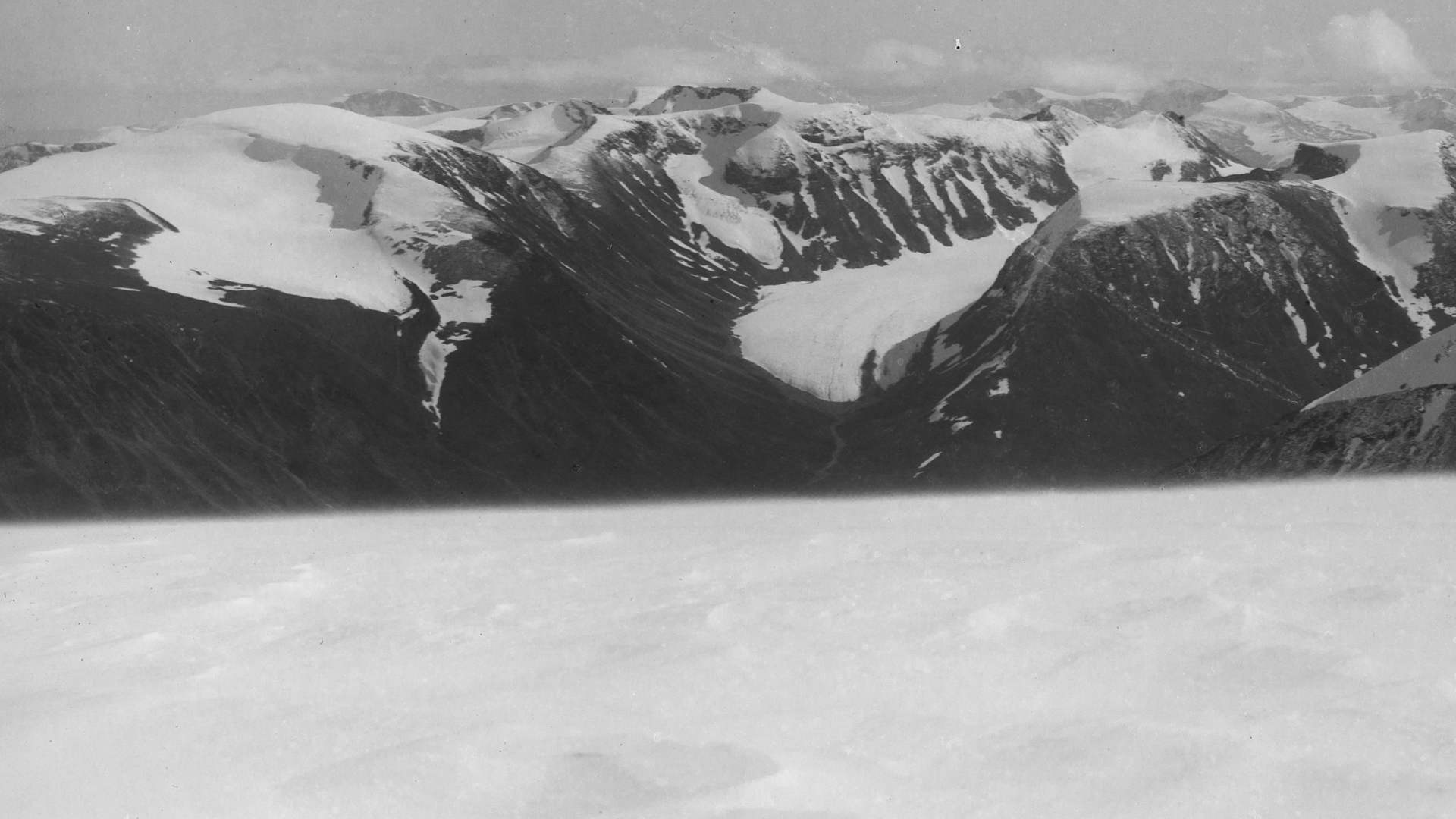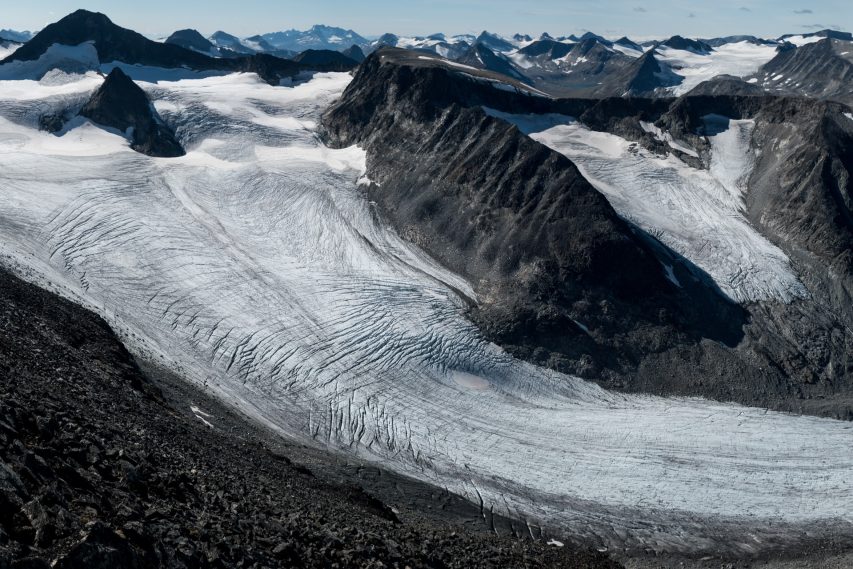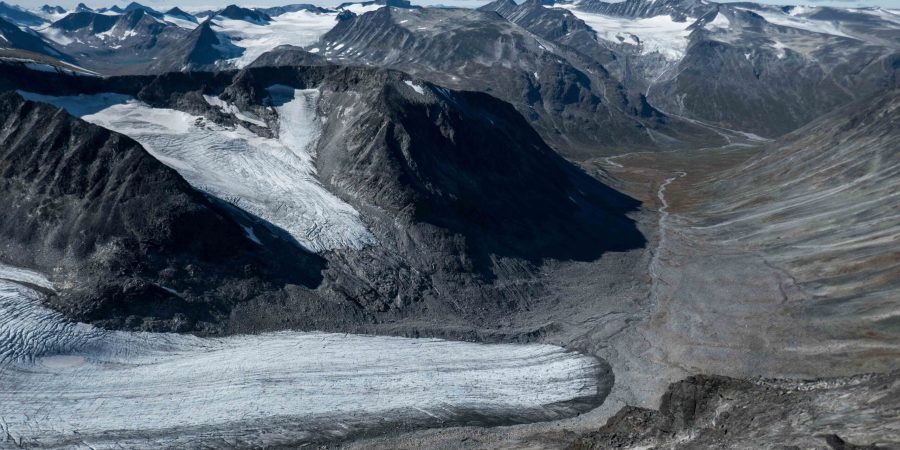Hellstugubrean (also: Hellstugubreen) is a three kilometer long north-facing glacier in eastern Jotunheimen, surrounded by some of Norway’s highest mountains. Hellstugubrean is one of only few glaciers where both length change and mass balance is being measured for over sixty years.


Hellstugubrean in 1981 (left) and 2017. Source: norgeibilder.no
The length change of Hellstugubrean is being measured since 1901, and the mass balance measurements started in 1962. These long time series really help to understand their interaction. Normally it works as follows: when mass balance is positive multiple years in a row, the glacier advances. And the other way around: when the balance is negative, the glacier recedes. After all, mass balance is the sum of snow fall in winter and melt in summer. If snow fall exceeds melt, the glacier gains mass and this would translate into more ice being transported to the snout, which in turn advances. Less mass means less ice flows towards the glacier terminus.
When mass measurements started at Hellstugubrean in 1962, its balance was positive. But soon it became negative, apart from the period 1989-1994. But while mass balance varied, the glacier kept receding over the entire period (starting 1901) at a rate of ten to twenty meters annually. This has everything to do with the length and small incline of the glacier. It takes very long for snow falling on the upper parts of Hellstugubrean to be turned into ice and end up at the snout, so the effect of a few years of increased snowfall is spread out of a much longer period that’s still dominated by mass loss. Nonetheless, Hellstugubrean does react to a changing climate. As mass loss has been increasing with rising temperatures, the snout is receding a little bit faster.



Hellstugubrean as seen from Galdhøpiggen in 1890 (left) and 2021. Photographer 1890: Knud Knudsen, University of Bergen Library.

Looking at the unstoppable receding glacier, one wonders where it will end. This question might be answered with the help of the equilibrium line altitude (ELA), or the height at which there is still snow cover at the end of summer. The ELA should be around 1850 meter for Hellstugubrean to be in balance, but currently the snow line is often close to 2000 m. Due to climate change the ELA is climbing even further, to the point where the entire glacier (which doesn’t exceed 2200 meter anywhere) will be deprived of snow completely at the end of summer.While the glacier presently is thinning by a meter annually, at the end of this century mass loss will almost double. Hellstugubrean is therefore bound to disappear (Nesje, 2023).

Visiting wasting Hellstugubrean is relatively easy. From the mountain hotel Spiterstulen (also a camp site) there is a trail seven kilometers long that brings you to the snout of Hellstugubrean. On your way you ascend four hundred meters. To get a bird’s eye view, experienced hikers could clamber Store Memurutinden (2364 m). From there you have views over Hellstugubrean, Veobrean and Austre Memurubrean. A magnificent vista over a disappearing world.
Search within glacierchange: